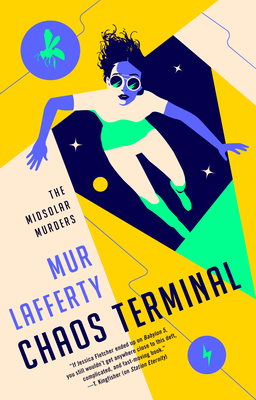 Chaos Terminal (The Midsolar Murders, #2) by Mur Lafferty
Chaos Terminal (The Midsolar Murders, #2) by Mur Lafferty Format: eARC
Source: supplied by publisher via Edelweiss
Formats available: paperback, ebook, audiobook
Genres: mystery, science fiction, science fiction mystery
Series: Midsolar Murders #2
Pages: 369
Published by Ace on November 7, 2023
Purchasing Info: Author's Website, Publisher's Website, Amazon, Barnes & Noble, Kobo, Bookshop.org, Better World Books
Goodreads
Mallory Viridian would rather not be an amateur detective, and fled to outer space to avoid it…but when one of the new human arrivals on a space shuttle is murdered, she’s back in the game.
Mallory Viridian would rather not be an amateur detective, thank you very much. But no matter what she does, people persist in dying around her—and only she seems to be able to solve the crime. After fleeing to an alien space station in hopes that the lack of humans would stop the murders, a serial killer had the nerve to follow her to Station Eternity. (Mallory deduced who the true culprit was that time, too.)
Now the law enforcement agent who hounded Mallory on Earth has come to Station Eternity, along with her teenage crush and his sister, Mallory’s best friend from high school. Mallory doesn’t believe in coincidences, and so she’s not at all surprised when someone in the latest shuttle from Earth is murdered. It’s the story of her life, after all.
Only this time she has more than a killer to deal with. Between her fugitive friends, a new threat arising from the Sundry hivemind, and the alarmingly peculiar behavior of the sentient space station they all call home, even Mallory’s deductive abilities are strained. If she can’t find out what’s going on (and fast), a disaster of intergalactic proportions may occur.…
My Review:
The title for this one works both ways. There’s plenty of chaos at this terminal, and much of it is terminal. But that’s not exactly a surprise with Mallory Viridian on the case. Even if part of the chaos at Station Eternity happens BECAUSE Mallory Viridian is on the case.
And entirely too much of the rest of it happens because not ALL of Mallory Viridian is on the case. To the point where Mallory isn’t even aware that there’s a case at all until someone literally drags her to the scene of the crime, and Mallory finally figures out that whatever has gone wrong on Station Eternity has gone wrong with her as well.
It’s not actually a surprise that something has gone wrong AROUND Mallory, or even that something has gone wrong WITH Mallory. Mallory is a chaos magnet of the first order, and both of those things are always happening whenever Mallory is around.
Because people always end up dead in Mallory’s vicinity. Not because she’s some kind of serial killer, but because the kind of chaos that Mallory attracts – and is then both blamed for and stuck with solving, not necessarily in that order – is the chaos that surrounds murder. She doesn’t perpetrate it, she doesn’t cause it, but wherever Mallory is, murder happens.
What Mallory is still adjusting to, and the reason that Mallory isn’t initially aware of the problems that the station is having, are directly related to Mallory’s discovery about herself and all those murders in the first book in the Midsolar Murders series, Station Eternity.
Mallory was bitten by a wasp as a child. But it wasn’t a wasp. Mallory was bitten by an advance scout for the Sundry, an alien insect species that either infiltrated Earth or arose there long before First Contact. The Sundry, as a hivemind and as a species, like gathering data and are attracted to chaos because there’s plenty of data to parse in chaotic conditions.
It’s unfortunate for Mallory that the scout that bit her was from a hivemind that was particularly attracted to the chaos around murder investigations, leading to pretty much everything that happens in Mallory’s life afterwards.
Leading Mallory to the isolation of Station Eternity – as a mere four humans aren’t enough to generate the coincidences that lead to Mallory’s brand of murder chaos.
There are, however, plenty of other species living and working aboard the station, including the chameleon-like Phantasmagore and the rocky Gneiss. And the Sundry, who in their love of chaos and data make a specialty of handling the semi-autonomous functions of spaceships and space stations.
But something is wrong with the Sundry aboard Station Eternity – and it’s wrong with Mallory as well. It’s so wrong that when a whole shipload of humans arrives on the Station, Mallory isn’t panicking about the near-certainty of murder in her vicinity. Not even as the coincidences start piling up. Suddenly there are entirely too many humans aboard Eternity, and too many of them know Mallory entirely too well.
It’s only when the bodies start dropping that Mallory finally figures out that the murders aren’t the only thing going wrong on the station, and that she’ll have to solve those murders without her murder-solving mojo – or get it back.
If she can.
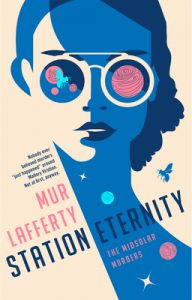 Escape Rating B: One of the things that made the first book in this series, Station Eternity, so damn much fun was its relentless pace. From the moment we meet Mallory, the chaos starts swirling, Mallory starts panicking, and the whole thing is off to the races.
Escape Rating B: One of the things that made the first book in this series, Station Eternity, so damn much fun was its relentless pace. From the moment we meet Mallory, the chaos starts swirling, Mallory starts panicking, and the whole thing is off to the races.
But when we get back to Mallory in Chaos Terminal, Mallory is not feeling herself. At all. She thinks it’s some kind of space flu. Whatever it is, she’s so far from firing on all thrusters she isn’t even aware that a huge chunk of what makes Mallory BE Mallory is totally offline.
The story isn’t told from Mallory’s first person perspective, but she is very much the reader’s perspective on events, which means that Mallory being in a complete fog for the first third of the book means that we are as well.
So it’s a third of the way into the story before Mallory’s fog lifts and the real action kicks into gear. At that point, it’s suddenly, thankfully and blissfully gangbusters, but it’s a LONG slog to get there and I very nearly didn’t.
The story, and the mystery, in Chaos Terminal is wrapped around cleaning up the many, many fascinating loose ends that were left laying on the deck of Eternity after the chaotic, nearly cataclysmic events of that first book – especially Mallory’s own, personal loose ends.
Which means that Chaos Terminal is probably not the best place to start the Midsolar Murders because a LOT of this story was set up in that first book. Howsomever, if you got caught up in Mallory’s bloody, madcap situation then, there’s a lot of fun in seeing most of those loose ends get tied up, quite possibly in a series of Gordian Knots, here in this second outing.
In spite of the science fictional setting – which is utterly fascinating – this SF mystery is pretty much character driven. Meaning that if you like Mallory as a character and enjoy her multi-species Scooby Gang, it will probably work for you. I did like Mallory a LOT in Station Eternity, so I came into Chaos Terminal expecting to love it as well. I think it works a bit less well than that first book because Mallory REALLY isn’t herself for that long beginning, and the less polished and/or less likable characters’ rough edges are very much on display while Mallory is getting her act together.
But I do like Mallory Viridian as a character, and as a human perspective on humanity’s first toehold in this near-future, post-First Contact, wider galactic universe. A universe that is not only not centered on humans, but doesn’t even seem to be centered on humanoids, making it every bit as fascinating a character as Mallory herself.
Which means that I absolutely will be back to see who, or what, ends up dead when Mallory’s next investigation/adventure/crisis appears!

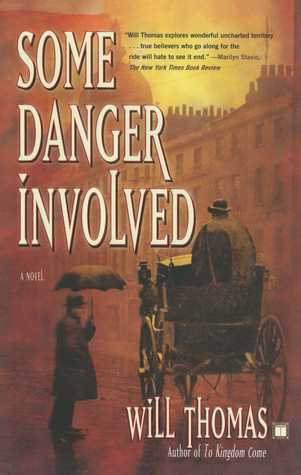 Some Danger Involved (Barker & Llewelyn, #1) by
Some Danger Involved (Barker & Llewelyn, #1) by 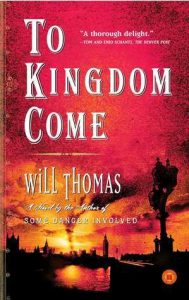 (Although my own family was still spread across Eastern Europe at this time period, I have pictures of my great-grandfather, and this would have been his generation, letting me connect to this story on a deeper level than I expected – which is where those multiple levels of comfort read come comfortably in.)
(Although my own family was still spread across Eastern Europe at this time period, I have pictures of my great-grandfather, and this would have been his generation, letting me connect to this story on a deeper level than I expected – which is where those multiple levels of comfort read come comfortably in.)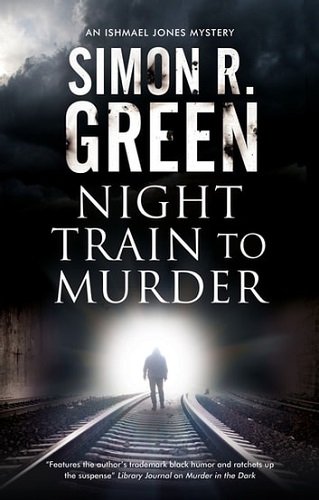 Night Train to Murder (Ishmael Jones #8) by
Night Train to Murder (Ishmael Jones #8) by 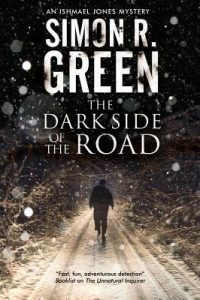 His work and romantic partner, Penny Belcourt, knows as many of his secrets as Ishmael himself does. They met on a case, the first one in this series,
His work and romantic partner, Penny Belcourt, knows as many of his secrets as Ishmael himself does. They met on a case, the first one in this series, 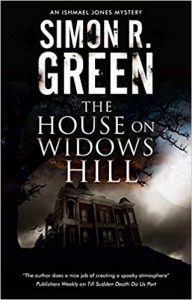 Because one of the things that this series does so very well, and with so much high-quality snark and occasional sheer bloody-mindedness, is that the worst monsters in this or any other universe are inevitably human. And that’s what keeps me coming back to this series, over and over and over again.
Because one of the things that this series does so very well, and with so much high-quality snark and occasional sheer bloody-mindedness, is that the worst monsters in this or any other universe are inevitably human. And that’s what keeps me coming back to this series, over and over and over again.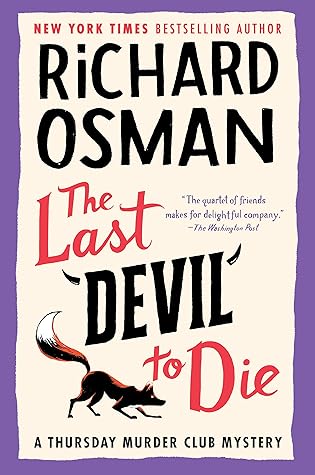 The Last Devil to Die (Thursday Murder Club, #4) by
The Last Devil to Die (Thursday Murder Club, #4) by 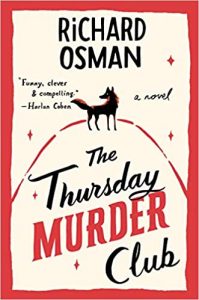 The first ‘devil’ to die in this fourth entry in the
The first ‘devil’ to die in this fourth entry in the 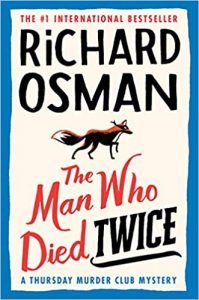 Escape Rating A: The Last Devil to Die turned out to be the perfect capstone to this series so far, but I had more than a bit of an approach/avoidance problem to reading it all the way to the bitter end.
Escape Rating A: The Last Devil to Die turned out to be the perfect capstone to this series so far, but I had more than a bit of an approach/avoidance problem to reading it all the way to the bitter end.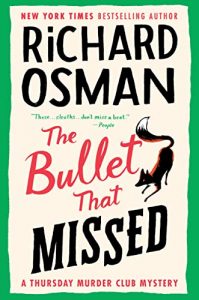 And it’s not just that they are as deadly serious as the corpses they discover, but also that they are pragmatic and savvy about their place in the world, that they have many more days behind them then ahead of them, that they are often discounted because of that, and that the end is coming for all of them and it’s important how they occupy that time and take care of that end as it comes.
And it’s not just that they are as deadly serious as the corpses they discover, but also that they are pragmatic and savvy about their place in the world, that they have many more days behind them then ahead of them, that they are often discounted because of that, and that the end is coming for all of them and it’s important how they occupy that time and take care of that end as it comes.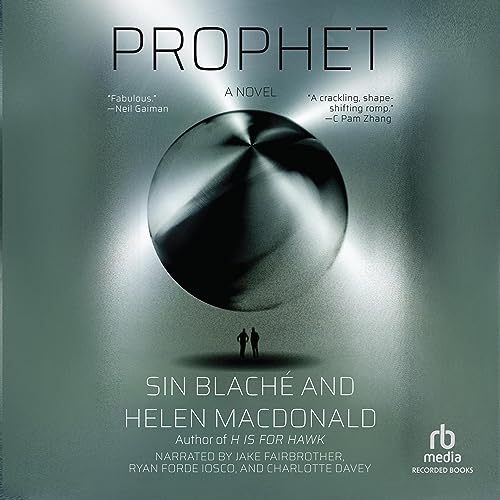 Prophet by
Prophet by 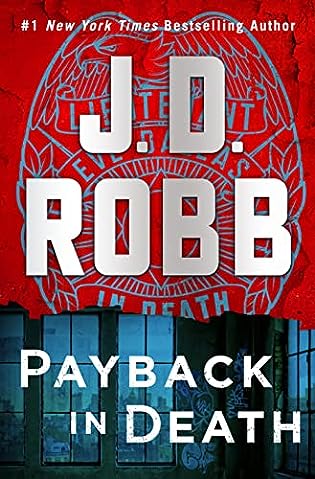 Payback in Death (In Death, #57) by
Payback in Death (In Death, #57) by  Escape Rating B: At this point, I’m here to see how all my ‘book friends’ are doing after whatever happened in the previous book in the series (which in this case was
Escape Rating B: At this point, I’m here to see how all my ‘book friends’ are doing after whatever happened in the previous book in the series (which in this case was 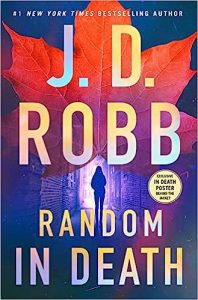 And that the investigation displayed yet again the reasons that Dallas and her squad are the best at what they do.
And that the investigation displayed yet again the reasons that Dallas and her squad are the best at what they do.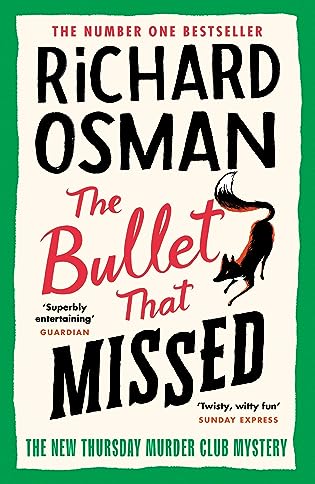 The Bullet That Missed (Thursday Murder Club, #3) by
The Bullet That Missed (Thursday Murder Club, #3) by 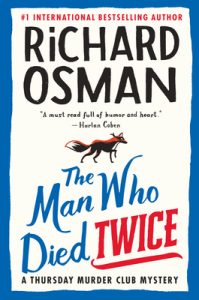 Escape Rating A-: There are two ways of looking at the adventures of the
Escape Rating A-: There are two ways of looking at the adventures of the 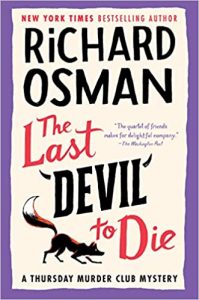 I was tempted to say something like ‘they still have a lot to give’ which doesn’t convey the right sentiment because it implies they’re an exception to some rule in the same way that telling a woman she doesn’t look her age may be intended as a compliment but actually reinforces the idea that looking whatever age she is isn’t good enough – when it should be.
I was tempted to say something like ‘they still have a lot to give’ which doesn’t convey the right sentiment because it implies they’re an exception to some rule in the same way that telling a woman she doesn’t look her age may be intended as a compliment but actually reinforces the idea that looking whatever age she is isn’t good enough – when it should be.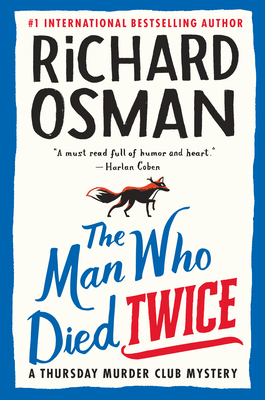 The Man Who Died Twice (Thursday Murder Club, #2) by
The Man Who Died Twice (Thursday Murder Club, #2) by 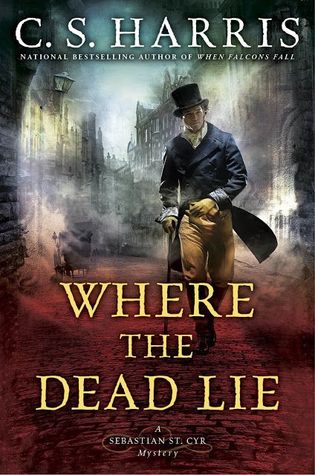 Where the Dead Lie (Sebastian St. Cyr, #12) by
Where the Dead Lie (Sebastian St. Cyr, #12) by 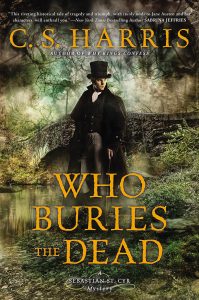 The dead lie in multiple meanings of the word AND in multiple places in this twelfth entry in the long-running, utterly marvelous
The dead lie in multiple meanings of the word AND in multiple places in this twelfth entry in the long-running, utterly marvelous 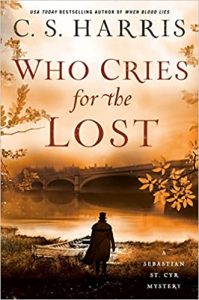 Escape Rating A-: This one is a really hard read. It’s excellent, just as the entire
Escape Rating A-: This one is a really hard read. It’s excellent, just as the entire 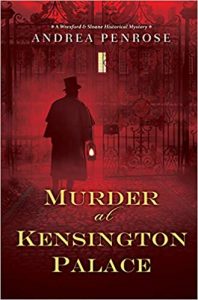 With one child’s, as well as their mother’s, tragedy yet to come in the later books in the series.
With one child’s, as well as their mother’s, tragedy yet to come in the later books in the series.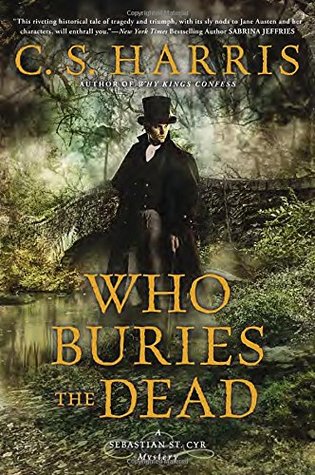 Who Buries the Dead (Sebastian St. Cyr #10) by
Who Buries the Dead (Sebastian St. Cyr #10) by 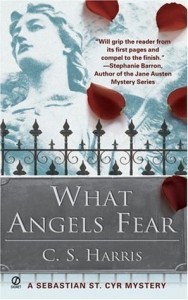 Whenever I flail around looking for a comfort read, I end up back in Regency England, following Sebastian St. Cyr, Viscount Devlin, as he investigates yet another murder that touches upon the high and mighty of his time and place – whether the high and mighty like it or not.
Whenever I flail around looking for a comfort read, I end up back in Regency England, following Sebastian St. Cyr, Viscount Devlin, as he investigates yet another murder that touches upon the high and mighty of his time and place – whether the high and mighty like it or not.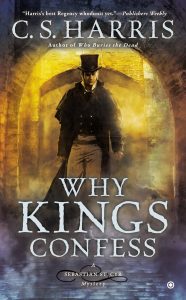 Escape Rating A-: I picked this up this week because yes, I was having a comfort read flail, and Sebastian St. Cyr always delivers – or rather whisks me away from my time to his. Which got me to thinking about the nature of comfort reads in general, and why this works for me in particular.
Escape Rating A-: I picked this up this week because yes, I was having a comfort read flail, and Sebastian St. Cyr always delivers – or rather whisks me away from my time to his. Which got me to thinking about the nature of comfort reads in general, and why this works for me in particular.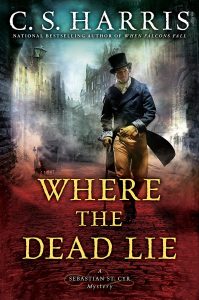 And that is most definitely a comfort to the reader. Or at least this reader.
And that is most definitely a comfort to the reader. Or at least this reader.